

Damion Smy
Boxy new KGM Musso unveiled to take on HiLux and Ranger ahead of Australian launch
7 Hours Ago
Japan’s sport-infused ‘compact crossover’ is big on style and fanfare, but is it a compelling alternative to premium Euro nameplates?
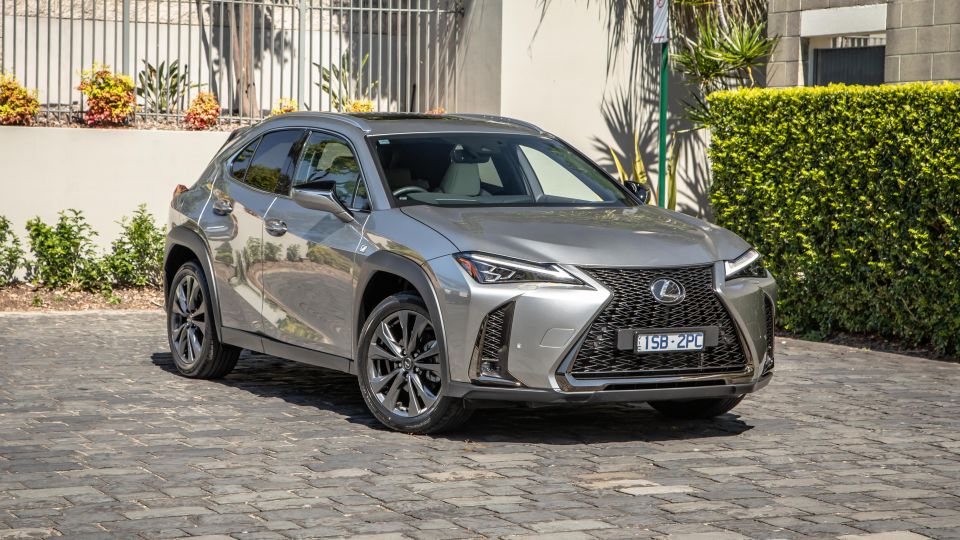
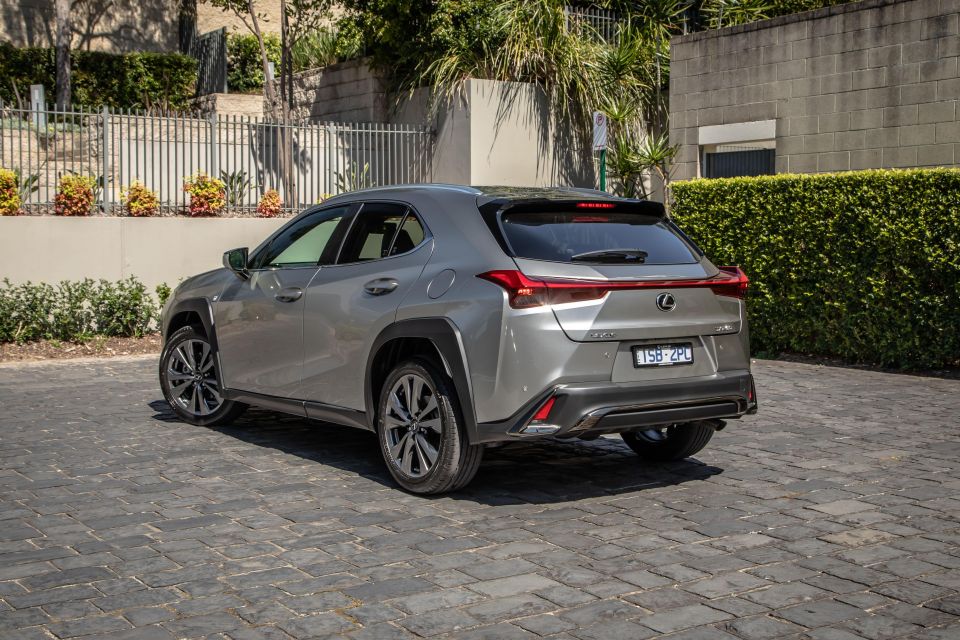

Journalist
New from
$44,445
excl. on-roads

Journalist
New from
$44,445
excl. on-roads


Journalist
New from
$44,445
excl. on-roads

Journalist
New from
$44,445
excl. on-roads
Quickly see how this car stacks up against its competition. Select any benchmark to see more details.
Where expert car reviews meet expert car buying – CarExpert gives you trusted advice, personalised service and real savings on your next new car.
The thing about being fashionably late to the motoring party is you can react to key competition. And, in the case of the still-fresh-faced Lexus UX, also bring a bit of a contemporary spin to the brand stable.
There’s something a bit exciting about the smallest and most cost-friendly Lexus model line. It doesn’t copy the European design mould and arrives with a contemporary take on its maker’s corporate styling.
Lexus calls UX its “compact crossover with a difference” and indeed it is.

The official claim on the box states the relative newcomer blends “the powerful performance of an SUV with the nimble handling of a hatchback”. Should we take it on face value?
By the tape measure, it’s more categorically ‘small’ than ‘compact’, a term perhaps not necessarily to be taken literally. Powerful? With 126kW it certainly isn’t. But it’s really this whole ‘SUV’ business that raises some skepticism, not solely targeting UX but as a motoring genre in general.
The UX is functionally a small hatchback, plastic cladding notwithstanding. A fusion of stylistic influences, perhaps, but if you’re after family-friendly utility, you really want to take the tape measure to these pint-sized five-doors clinging desperately to the ‘crossover’ vagaries.

Still, the UX is likeable, right down to the odd-shaped wheel arches, and presents itself with upmarket gusto, particularly in the high-grade F Sport guise we have on test here.
Thing is, it wants for very pretty penny, so it had ought to bring much more than just a dolled-up hatchback experience, right?
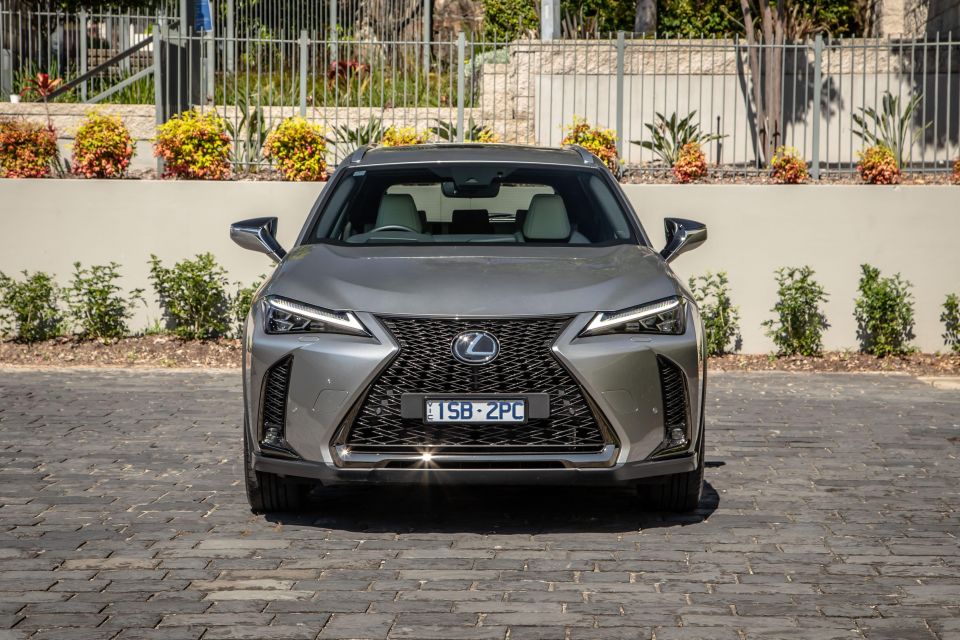
There’s a dizzying amount of choice on offer in the UX range. Our 2022 Lexus UX200 F Sport essentially marries the base petrol powertrain with the highest-grade F Sport trim.
It lists for $58,490 plus on-road coss on the public configurator before on-roads and options, a fair jump up from the $55,750 when the 2021 launched late last year.
Enhancement Package 1, the moon roof as fitted here, adds $2500. There’s also an Enhancement Package 2 that, for $5600, brings the glass roof plus niceties such as Mark Levinson sound, a head-up display and 360-degree camera system.
Outside of Caliente (red), there’s a choice of nine premium colours, each commanding $1750. Three different interior schemes – black, red or white – are available at no extra charge.
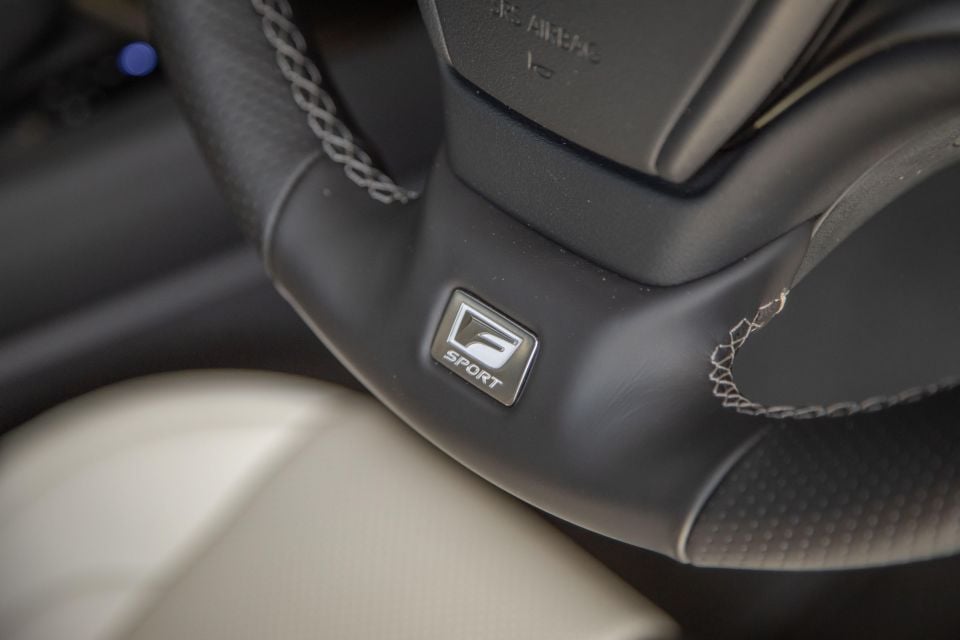
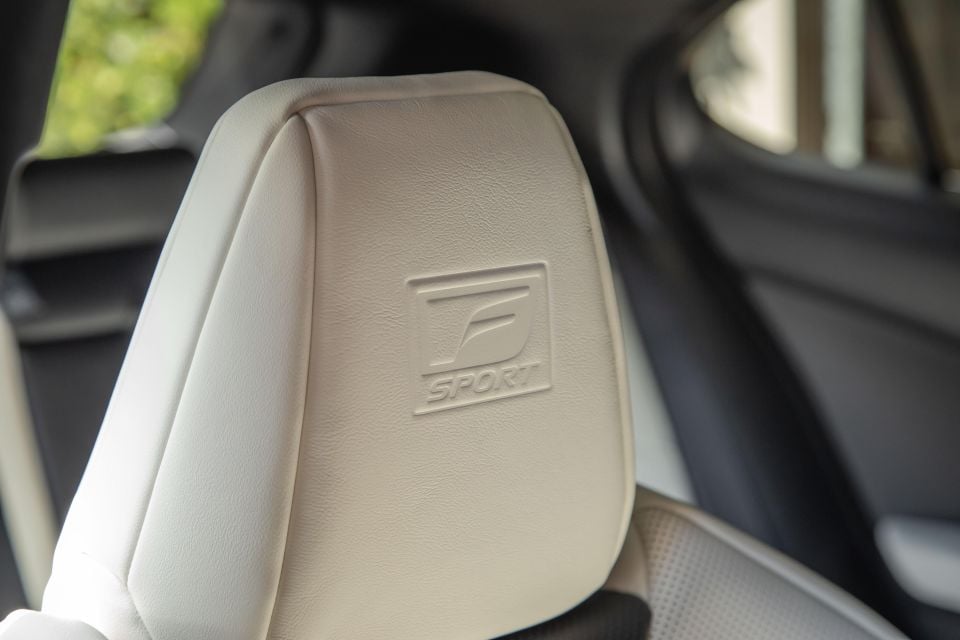
All up our Mercury Grey ‘pack 1’ is priced on road at $65,968 as tested. Adding ‘pack 2’ ups the drive-away price to $69,218. That’s big coin for a small naturally-aspirated front-driven anything…
Based on its list price, the UX200 F Sport lines up against the turbo all-paw Audi Q3 40 TFSI quattro ($55,200) or S line ($60,650), the front-driven BMW X1 sDrive20i ($55,900), the Mercedes-Benz GLA200 ($57,500) and the Volvo XC40 T5 R-Design ($56,990).
Closer to home, the UX200 Sport Luxury variant lists for $57,950. Want hybrid? The front-driven UX250h F Sport sits at $62,300 while the all-paw version lifts outlay to $66,800.

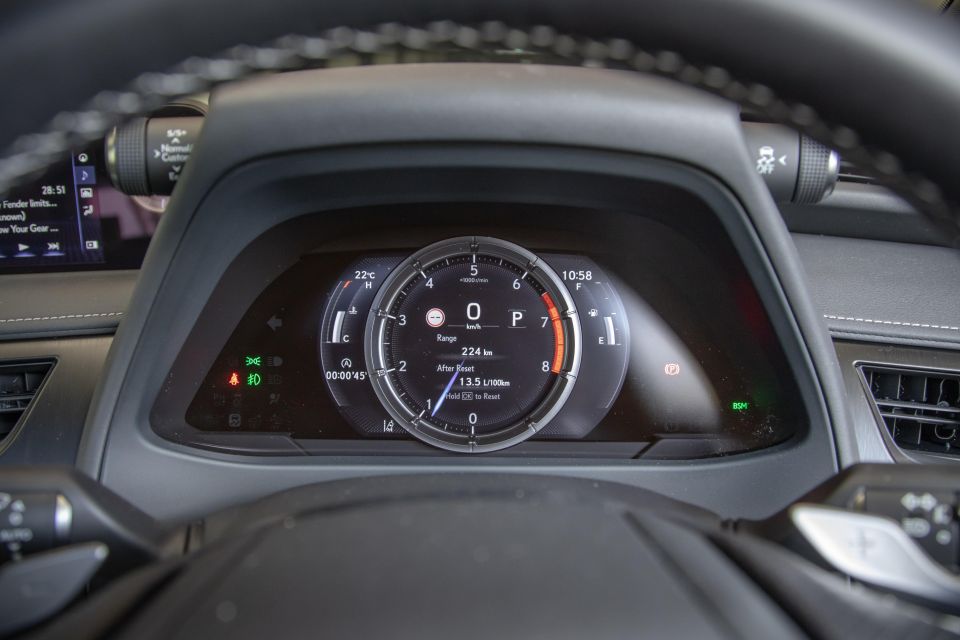
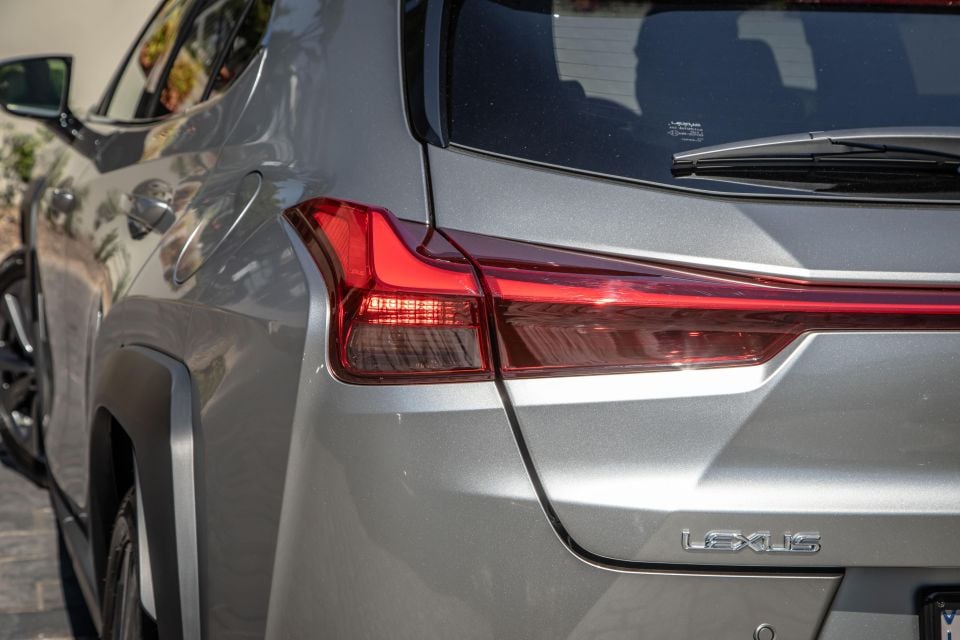

Buy your new car without the stress. It's fast, simple and completely free.

Great service from Travis and team, second time I have used this business would not hesitate to recommend them to anyone
Craig C.
Purchased a Ford Ranger in Sunshine Coast, QLD
CarExpert helped Craig save thousands on his Ford Ranger, now let us save you on your next new car.
Find a dealFirst up, what makes it an F Sport? Specifically, what’s the difference between F Sport and the Sports Luxury that represents a nominal $500 saving?
The F Sport brings adaptive damping for the suspension as well as drive mode selection (including Sport+ and Custom settings) and there’s Active Sound Control for some added synthetic aural enhancement.
Both versions offer different 18-inch wheels with identical run-flat Dunlop tyres, and the F Sport gets specific front and rear styling, bespoke front seating, and an 8.0-inch LCD driver’s instrumentation.
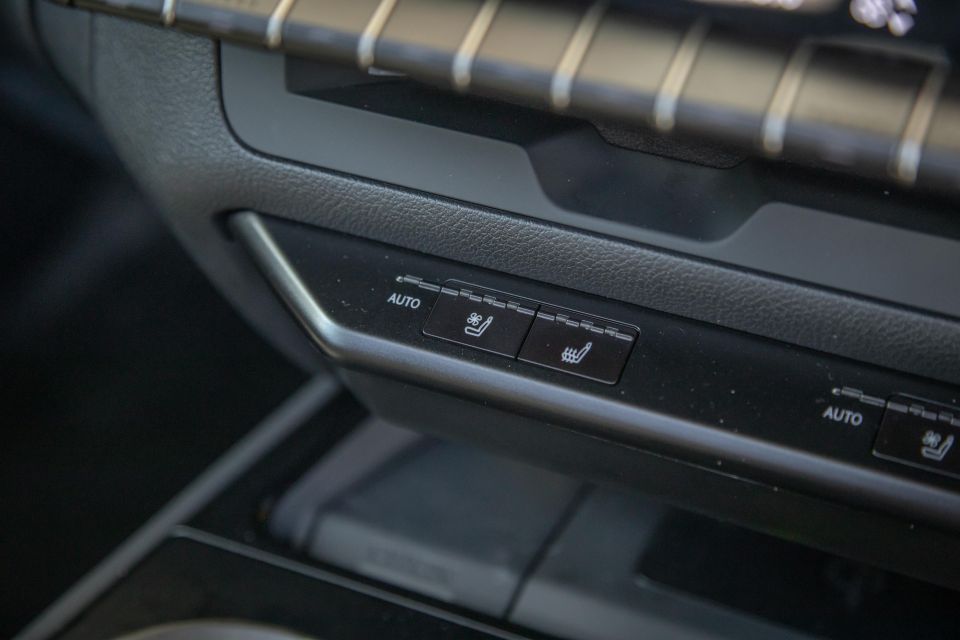
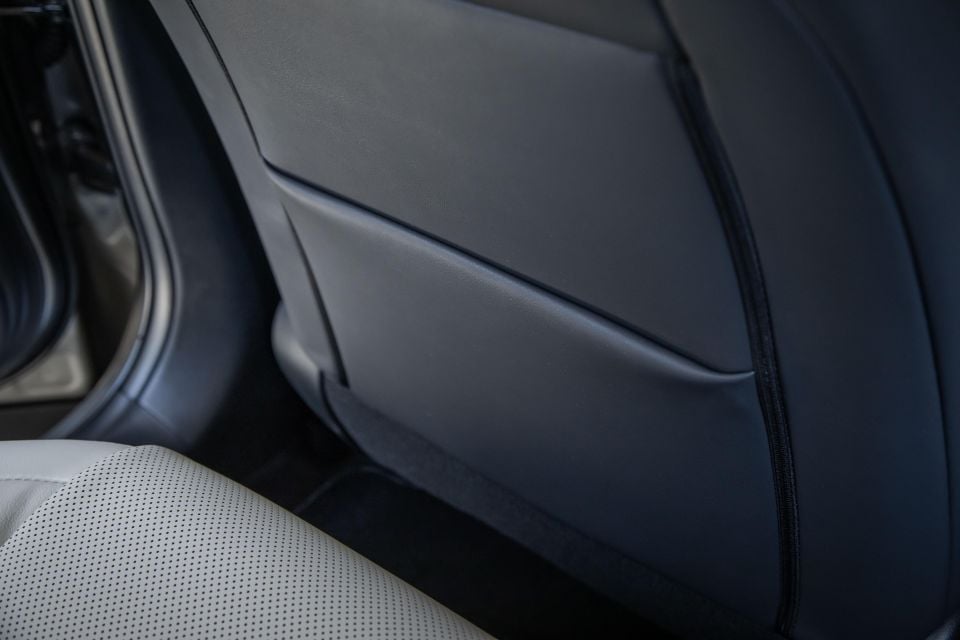
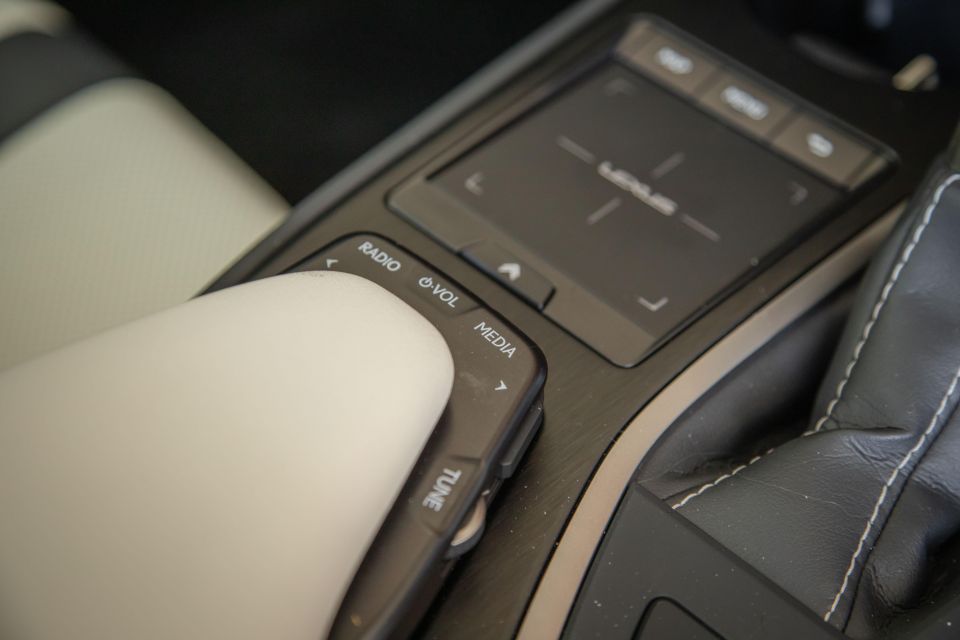
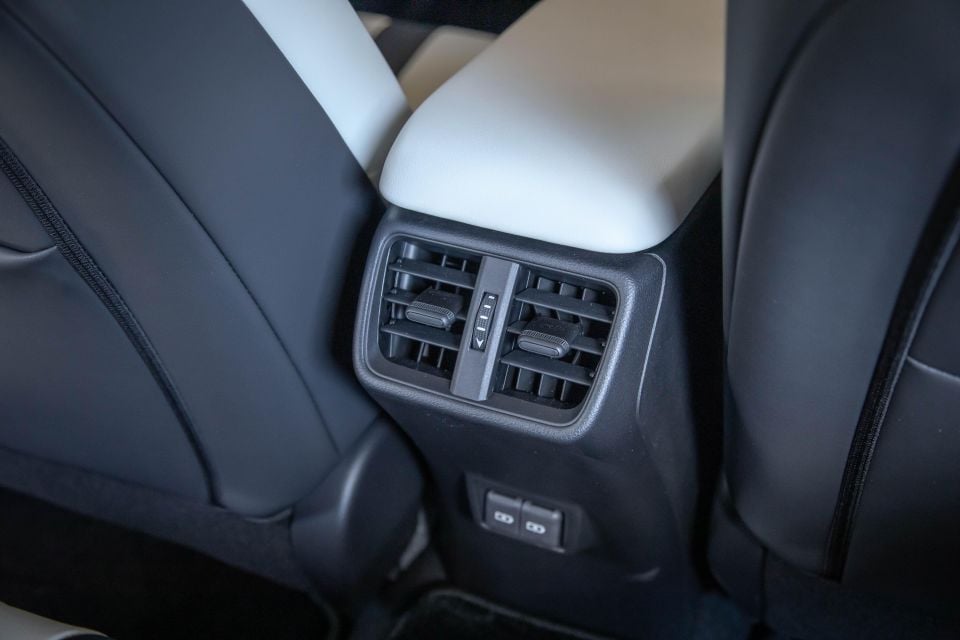
What is misses is the Sports Luxury’s standard 360-degree camera system and high-grade sound – which are both bundled into the F Sport’s Enhancement Package 2 at the aforementioned extra charge.
The F Sport equipment and features list includes LED headlights, cornering lights, power-folding and auto-dipping heated mirrors, rain-sensing wipers, front and rear parking sensors, a reversing camera, rear privacy glass, a powered tailgate and radar cruise control outside.
Inside, the top-grade UX fits powered wheel adjustment, comfort access, leather-accented trim, front seat heating and ventilation, dual-zone climate control, 10.3-inch display infotainment, sat-nav, DAB+, smartphone mirroring, eight-speaker audio, four USB ports (both A and C types) and inductive phone charging.

The UX wears a five-star ANCAP rating off the back of assessment conducted in 2019, applied to all versions offered from November the year prior.
It scored an excellent 96 per cent for adult occupant protection and 88 per cent for child occupant protection, as well as 82 per cent and 83 per cent respectively for vulnerable road user and safety assist.
This variant fits the fullest Lexus Safety Sense+ system that incorporates:
The UX also gets eight airbags, including driver and front passenger knee inflators. ISOFIX and top-tether child anchor points are fitted in the rear too.

A real highlight of the UX200 F Sport is its interior.
There’s a flamboyance to the cabin that anchors a character distinctly different to the Europeans it wants to be considered against. Much of it is the adventure in surface design, with lots of curves and contours in interesting areas.
Some of it is the bold white-accented colour combination, perhaps the highest maintenance of the three available – the red option is very fetching – but it certainly sets the UX apart and augments the rich material mix.
Much of it, though, is the sense of quality and solidity. Tactility wise it’s a real treat; smooth, slick and chock-full of (mostly) high-grade switchgear, controls and buttons, right down to strange if imaginative horizontal drive mode and traction control dials either side of the instrument binnacle.

The touch points and leather – or what’s partially leather, at least – are fantastic and a cut above a lot of stuff you find in some German offerings.
Rock hard, though, is an outcrop of dash fascia that butts up to the door trim. The level of agony it causes when I inadvertently jam my knee into it climbing in prompts kaleidoscopically colourful language.
I put this purely down to user ineptitude until photographer Rawlings repeated the same feat in the call of duty on a separate occasion. Be warned, though I suspect individuals will inevitably discover this design fault for themselves…
More form-friendly are the seats. They’re excellent, the jewels of the cabin space, with a huge degree of electric adjustment up front.
The wheel, too, is fantastic and there’s the comfort access function many owners enjoy – I’m no fan – that moves the driver’s seat and steering wheel out of the way during entry and egress. It a shame, then, the powered wheel height and reach is somewhat limited in outright lift and extension.

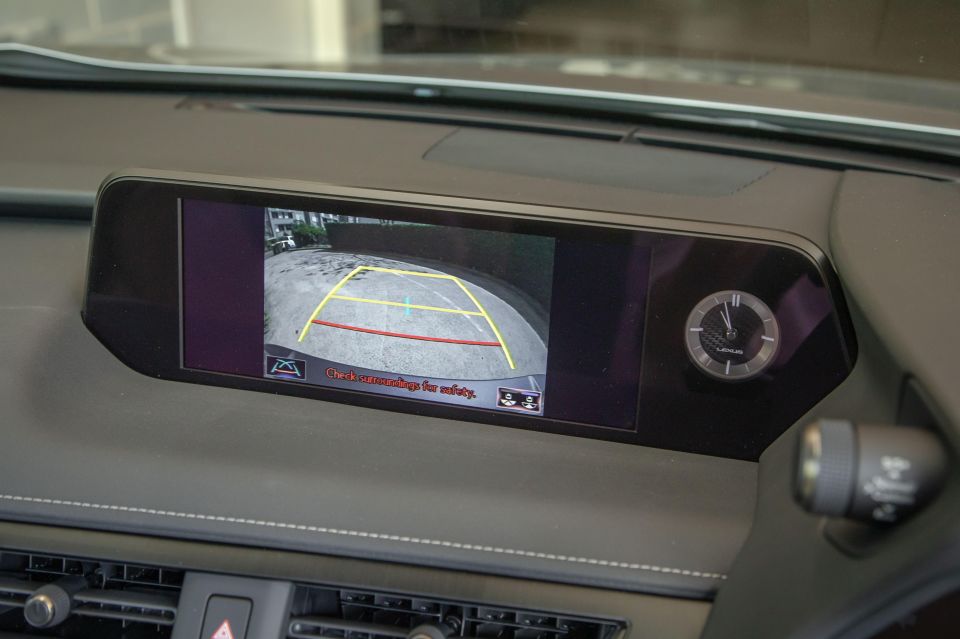
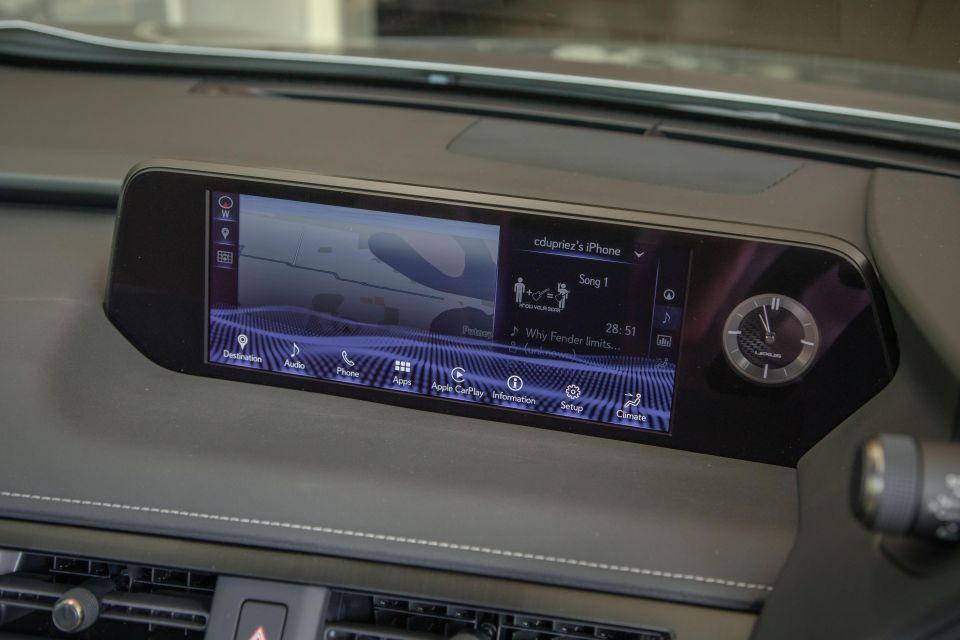
It’s the F Sport that exclusively offers the fancy 8.0-inch TFT driver’s display that mimics, if you go back far enough, the LFA supercar. It also mirrors the 10.3-inch infotainment screen in fancy display fanfare on start-up. A shame, then, the tech experience quickly goes downhill from there.
The digital driver’s display works fine, though absent is control of the infotainment system features via the wheel controls and there’s no in-screen navigation mapping a-la German rivals.
Some extra infotainment control from the helm would help immensely because the touchpad and shortcut array on the console is utterly terrible. This is really Groundhog Day for Lexus vehicle reviews as similar gripes have cropped up for time eternal and, really, the relatively fresh UX was a chance to clean the slate.
But no. No touchscreen, a frustrating input interface to the point of distraction. Attempting to negotiate Apple CarPlay is next-level cumbersome, a format that simply fails miserably via remote access control. At least you get a CD player (remember those?).
And without wireless phone mirroring, you’re forced to stash your phone in the console bin, where the USB ports are hidden, rather than in the inductive cradle under the HVAC stack.
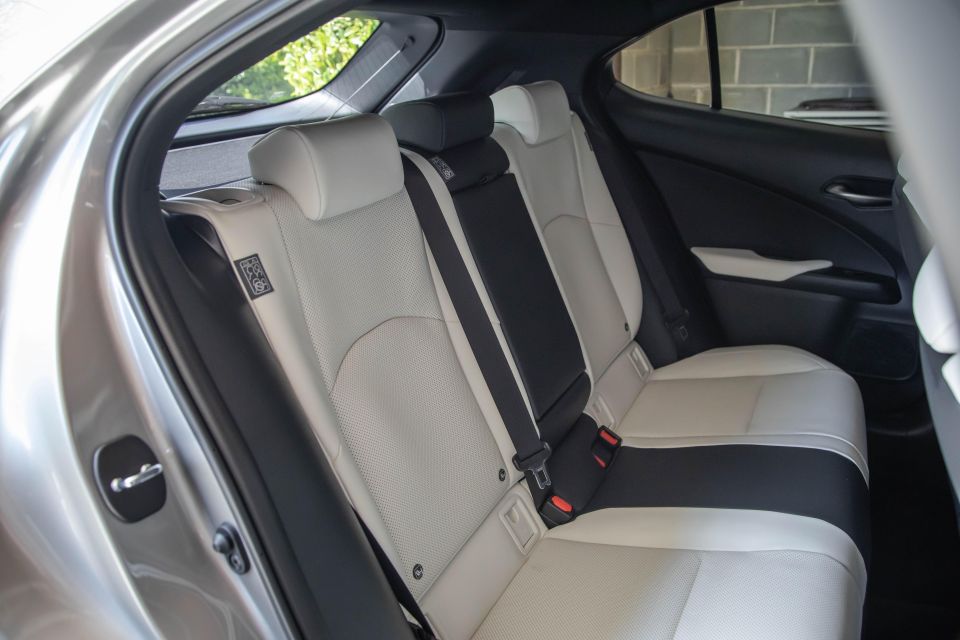
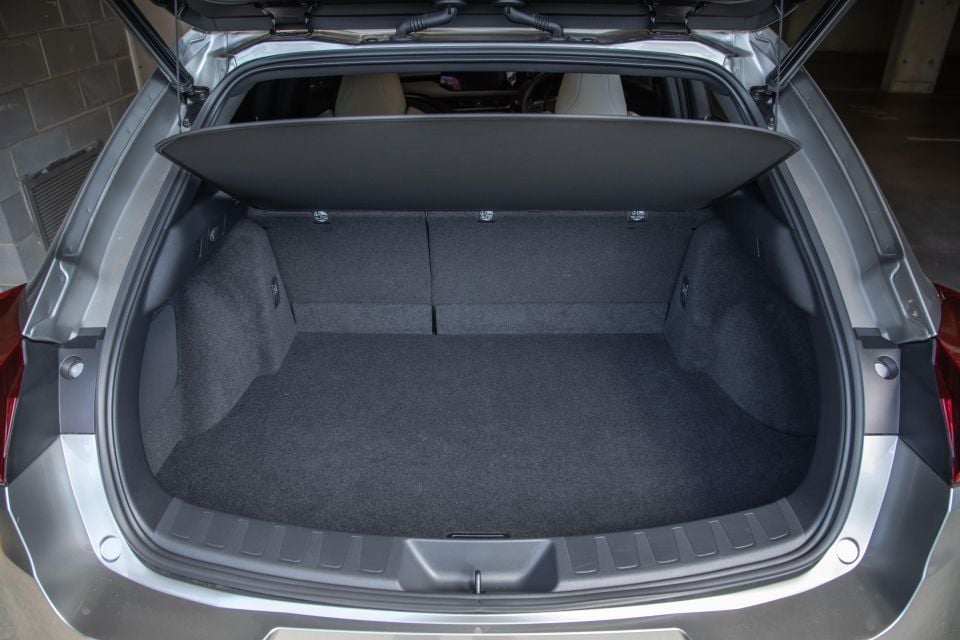

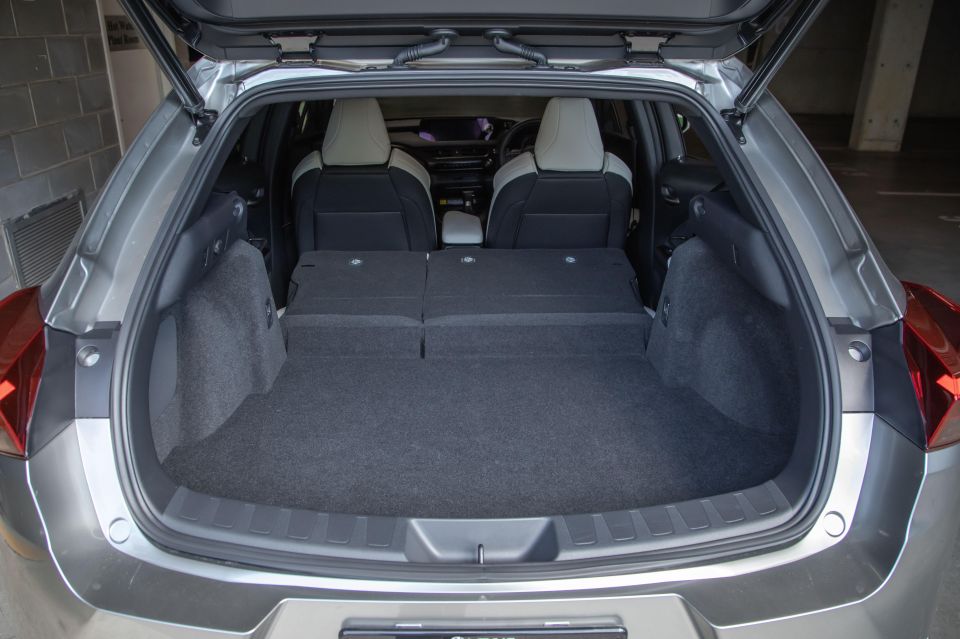
The UX’s ‘hatchback-ness’ plays out in row two. It’s cosy, if not overly so, and there’s just enough head and knee room if you’re an average-sized adult.
But the rear seating isn’t SUV-like in focusing on passenger comfort and conveyance, despite the air vents and USB ports. If you’re family hauling rather than running around the city, as the UX is so obviously designed to do, you’ve come to the wrong competitor.
The same goes for the boot. Its 371 litres are fine, if merely hatchback fine and paltry by SUV standards.
Most key rivals offer superior luggage space, even the Audi Q2 (405L) that many consider a viable cross shop even though the Lexus UX is, at 4495mm in length, much closer in size to the plus-sized Q3 (4517mm).
The Q2, for the record, is a petite 4208mm.
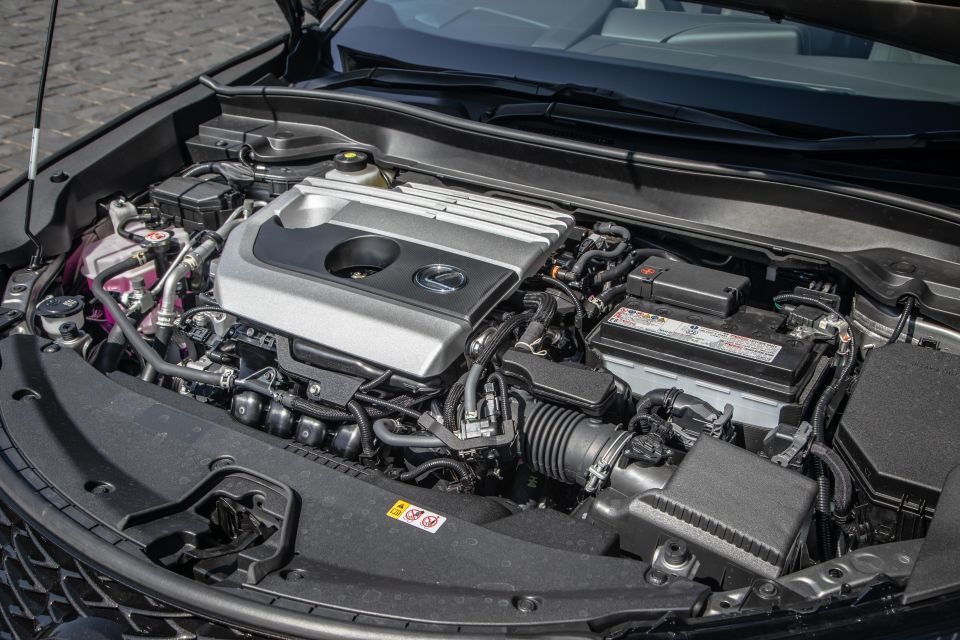
The 2.0-litre naturally-aspirated four-cylinder petrol engine in the UX200 is merely adequate in its outputs, producing 126kW at 6400rpm and a quite modest 205Nm well up in the rev range at 4800rpm.
By comparison, the 1.3L turbo offered in the base Benz GLA200 produces 120kW and a surlier 250Nm.
Let’s face it, the unit is essentially a mid-grade mainstream medium SUV engine. And the powertrain doesn’t get more pulse raising downstream, where the front-driver features a CVT automatic.
Unsurprisingly, Lexus doesn’t quote any performance figures other than suggesting that it’s SUV-like which, given the above, can be taken most literally.
Still, at around 1500kg the UX is fairly lean, and its combined consumption claim of just 5.8L/100km suggests the powertrain is tuned more for economy than for performance, notwithstanding any fair interpretation of the intent behind its Sport S+ drive mode.
On test, we saw mid-sevens for balanced driving, which is decent if unremarkable for a small front driver offering modest pace.
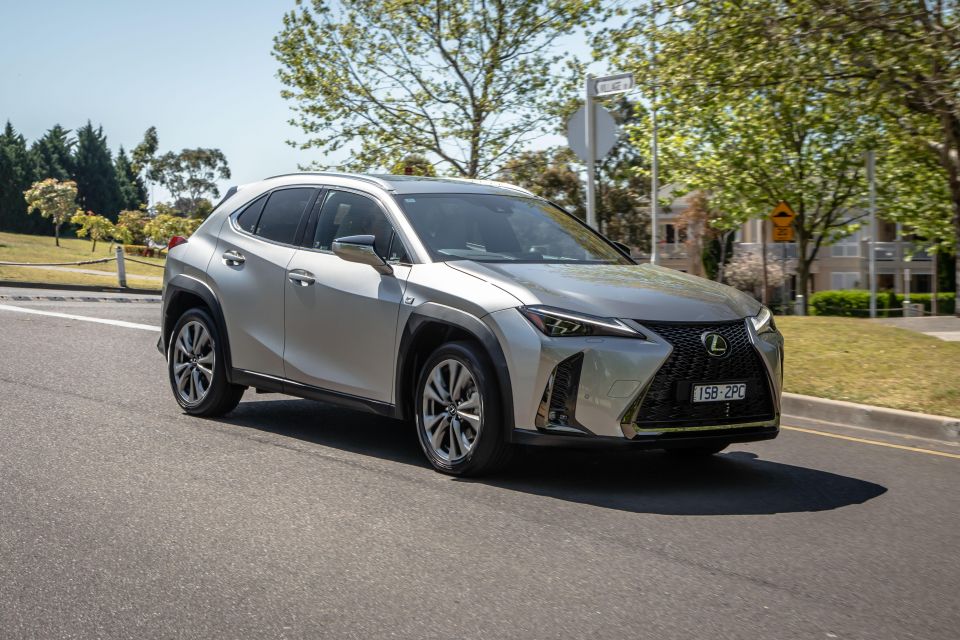
Where expert car reviews meet expert car buying – CarExpert gives you trusted advice, personalised service and real savings on your next new car.
Where the small Lexus presents so much promise in appearance and (mostly) cabin pizzazz, the actual driving experience is pretty ordinary.
Frankly, the naturally-aspirated engine and CVT combination ought to stay in its natural home – cut-priced, lower-spec mainstream SUVs – and not in premium small ‘crossovers’ touting sporting credentials and wearing price tags starting with a six. Literally anywhere else you look you’ll find a better package under the bonnet.
It’s no struggler, just there’s nothing in reserve if you want to raise the pulse to any degree. Torque is make-do and ask too much of the engine, regardless of any drive mode, and the dividend paid is a lot of noise and conspicuous strain.
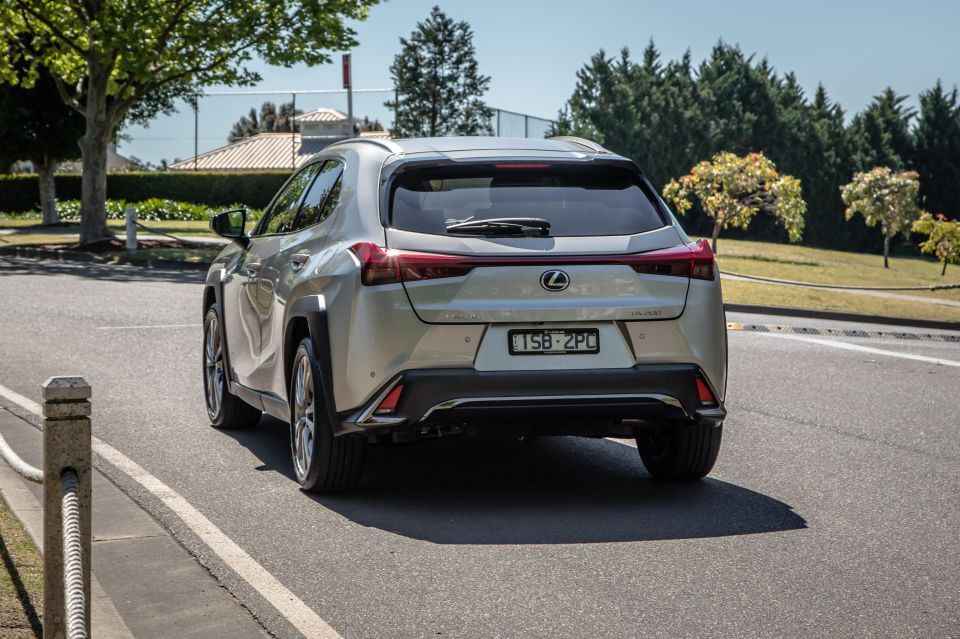
On the march, the UX is lucky to scrape into single figures for the ‘sprint’ to 100km/h, which isn’t nearly spirited enough for what this vehicle is pitching.
Similarly, the steering is nice and light if quite inert, sapping a key element to its ‘sporting’ angle. While there’s a bit of calibration fiddling to the underpinnings as you file through more drive modes than this package really needs, it remains quite ordinary throughout and never really taps into any inner mojo.
Then there’s the ride and handling package. Passively, the chassis is actually quite nimble and light on its tyres. It’s just that adaptive suspension you specifically stump for as a key part of the F Sport make-up doesn’t really transform the ride or the handling to plateaus you ought to expect.
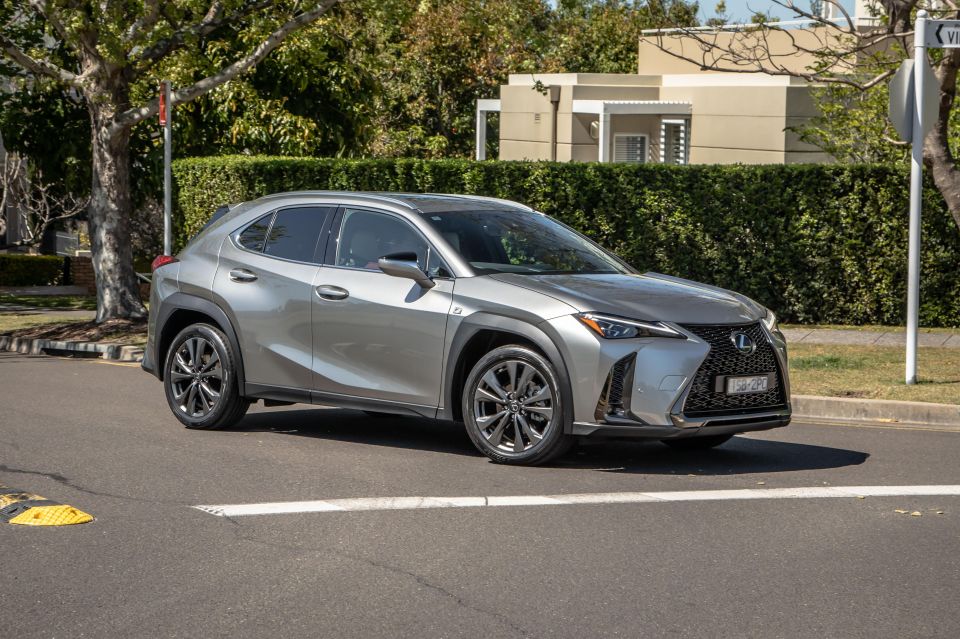
While the standard damping setting is soft and the ride pliant across undulations, hit a sharp edge and the suspension still jars. Conversely, any degree of tautness never elevates the dynamic character to a level that entices you to go looking for curves with enthusiasm.
Driven leisurely, the F Sport is fine. But you could save an absolute bomb opting for the base Luxury spec and, to a large degree, you’ll experience a similar on-road persona. If only the sporting version’s characteristics, be it comfort or handling focused, measured up like its build and cabin execution.
One saving grace should be fuel economy, and the UX does present that stellar 5.8L/100km claim.
However, the best we saw was 7.5L/100km with quite a bit of motorway driving in the mix, and it does settle into double figures running about town where the UX is perhaps the most comfortably inside its element.
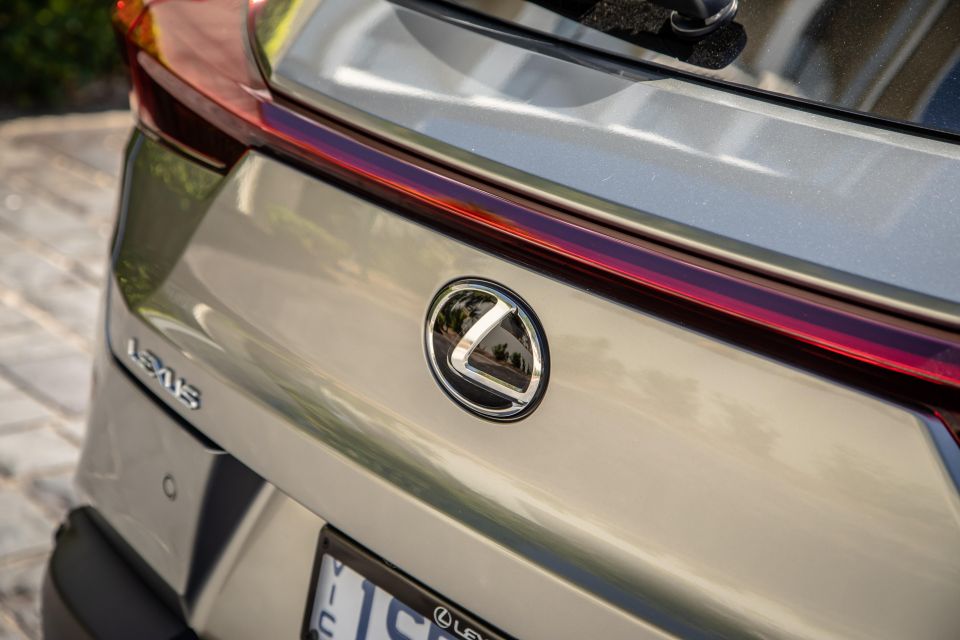
Lexus offers a four-year, unlimited-kilometre warranty, which is better than the three-year surety of rivals Audi and BMW, if shy of the five-year warranty offered by Mercedes-Benz and Volvo.
The capped-price servicing plan is a short three years, fixed at $495 per visit with intervals of every 12 months or 15,000km.
You also get access to the Lexus Encore ownership program, which gives owners access to Caltex fuel discounts, invitations to luxury dinners and events, as well as luxury hotel partnership benefits.
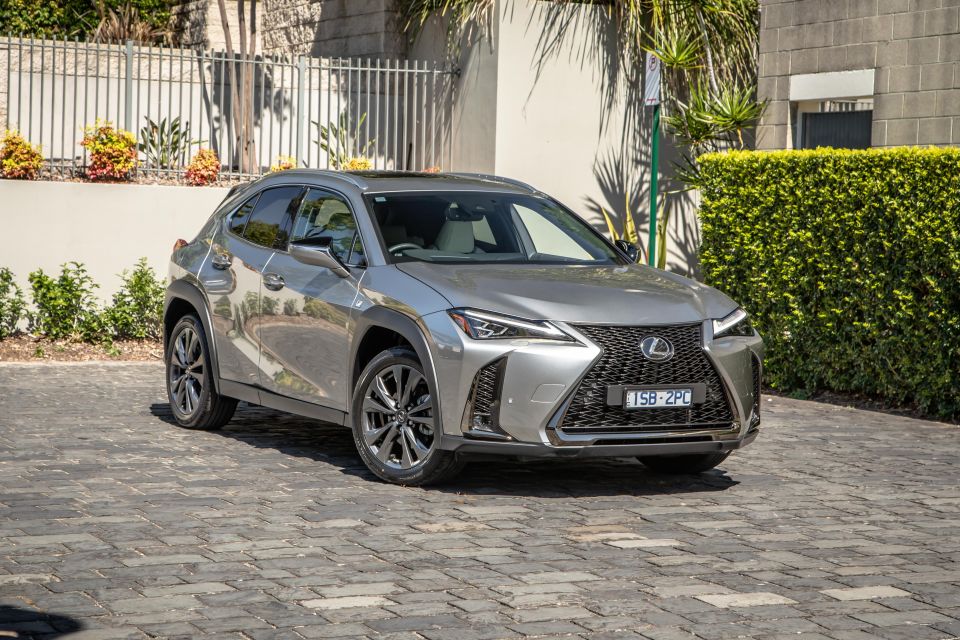
The UX200 F Sport’s major forte is its presentation. It’s got the look outside and lays on the wow factor inside, and it certainly brings its own inimitable and appealing spin to the premium landscape.
It just doesn’t deliver enough depth in enough areas for the sort of promise it makes and the sort of money it commands.
The UX really doesn’t offer the sort of space and practicality for those shopping for an SUV. And there’s not nearly enough enthusiasm underpinning that package to convince as sporting proposition.
Lexus’s flagship small runabout is, however, quite likeable. The real issue is that it needs to deliver more than what it does and it only really shines brightly in limited areas that ply a premium aura.
Perhaps the even pricier hybrid version or moving further down the range is where you might unearth a sweeter UX experience.

Click the images for the full gallery
MORE: Everything Lexus UX
Where expert car reviews meet expert car buying – CarExpert gives you trusted advice, personalised service and real savings on your next new car.


Damion Smy
7 Hours Ago


Damion Smy
9 Hours Ago


Damion Smy
10 Hours Ago


Damion Smy
12 Hours Ago


Damion Smy
13 Hours Ago


Damion Smy
14 Hours Ago